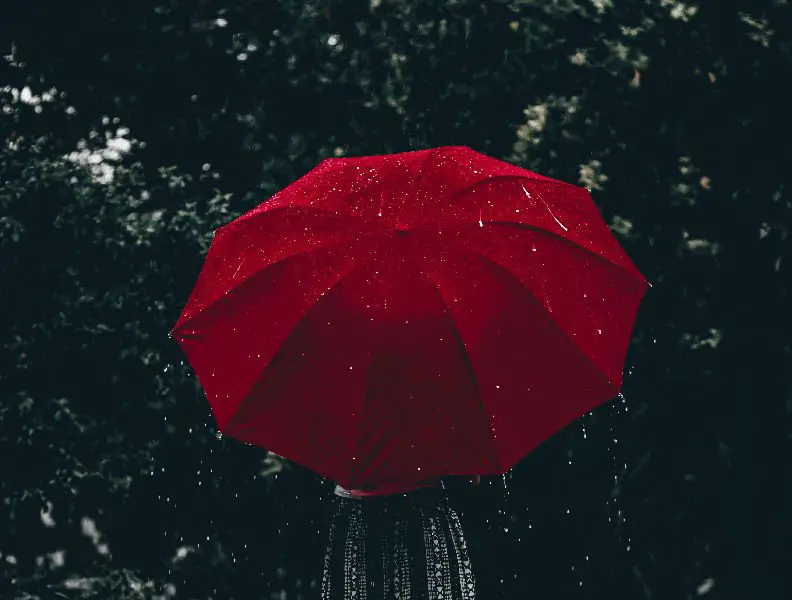The world of electric scooters is becoming more complex with new models each year, each with its own set of features. To find a scooter that suits your needs, understand the types available and their pros and cons.
This guide outlines common scooter types, categorized by key aspects for easy reference.

Types of electric scooters
Electric scooters can be divided by four main criteria:
- by price
- entry-level
- middle-priced
- premium scooters
- by intended use
- urban
- off-road
- by recommended user age
- kids
- adult
- by features
- tire design
- battery type
- seat
- folding mechanisms
- braking systems
- suspension
- waterproofing systems
Price
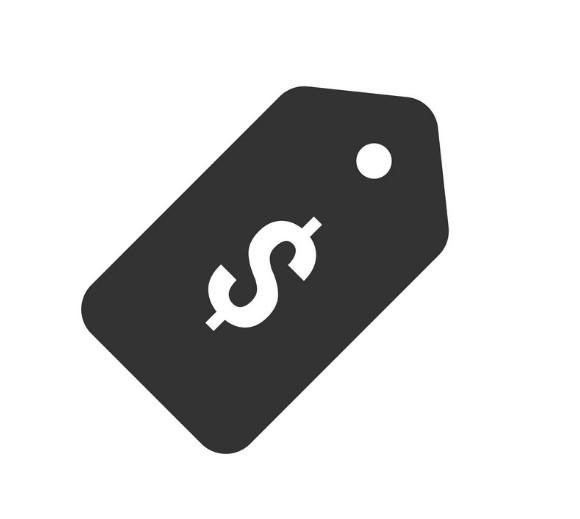
The price of an electric scooter is often a straightforward indicator of its quality.
Usually, the cheaper the scooter, the less you get out of it, as is the case with any other product.
Here you can mainly see three types of electric scooters: entry-level, middle-priced, and high-end premium models.
Entry-level/budget scooters

Entry-level scooters, priced around $500, cater to budget-conscious buyers.
Often found on platforms like Amazon or eBay, these models offer basic features, modest speed, and range with a lifespan of a few years.
Common features include basic design, lighting, suspension, and brakes, with additional features considered a bonus.
There are dozens, if not hundreds of budget scooters, and there are a few steals here and there if you’re hunting for a valuable cheap option. I’ve compiled a list of the best budget scooters in case you’re on a tight budget.
Middle-priced scooters

This is a very loose category, defined differently by both riders and brands.
Anything between $500 and $1500 can be considered a middle-priced scooter.
This scooter is ideal for personal commuting, surpassing budget models in durability and performance.
Some models even rival the priciest scooters, including off-road versions for rough terrain and high-end specs like hydraulic brakes, spring suspension, and ranges exceeding 30 mi / 48 km.
There are a lot of rotten apples in this category as well, so you’ll have to keep your eyes open.
Check out my electric scooter buying guide to know what to look out for the most, and my guide on the best scooters under $1500 for the best models around.

Premium scooters are where things start to get blurry and eye-watering. This is the point where we jump from “casual personal commuters” to “powerful racing electric vehicles on two wheels”.
High-performance scooters in this category aim for peak performance, costing up to $10,000 with cutting-edge features and speeds exceeding 62 mph / 100 kmh.
Designed for experienced riders seeking an elevated experience, they require helmets and protective gear, and should only be used on designated tracks.
Intended use
Different scooter models come with different sets of features that determine where can you use them.
Some scooters have small and smooth air-filled tires for maximum comfort on the street, while others come with strong suspension and deep threads designed for adventurous off-road rides.
Street-based scooters

Distinguishing between urban and off-road scooters is simple. If it has smooth tires instead of deep treads, it’s designed for the streets.
Another sign that a scooter is made for an urban terrain is the lack of proper suspension. If a scooter does not have shock absorbers, you will feel almost every bigger pothole on the road, let alone bumps on dirt tracks.
Off-road scooters
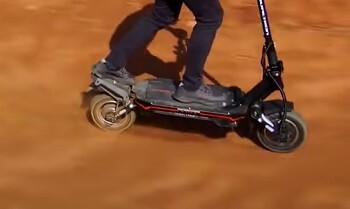
Off-road scooters are rarer than every other type.
The demand for these types of scooters is smaller, but you can still find many options if you are interested.
You must look for three main things: strong durable build, solid suspension, and large tires.
The downside is that these scooters are usually expensive, and are heavy and not too portable.
Intended user
Not all electric scooters are suitable for both adults and kids.
Powerful scooters are not for young, inexperienced riders, and small scooters are generally not suitable for adults and may get damaged.
Electric scooters for kids
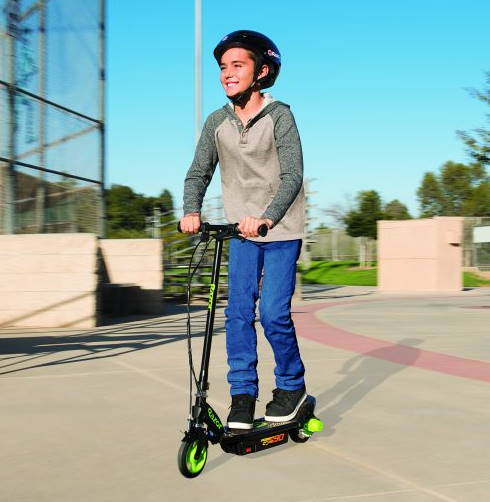
Kids’ scooters have a few key characteristics: low height, low-speed levels, and only a few features that do not overcrowd the cockpit.
These scooters are often further categorized by age and divided into the following brackets:
- for kids up to 7 years
- for kids aged between 8 and 11
- for kids aged between 12 and 15
Riders aged above 16 are usually considered adult enough to be able to ride a regular electric scooter.
When buying a scooter for a kid, consider their character, maintenance habits, usage frequency, and other relevant factors.
E-scooters for adults

The main thing to look at when deciding whether a scooter is made for adults is to look at its weight limit.
Adult scooters have a much bigger weight limit than kids’ scooters, normally 220 lbs / 100 kg or above. You should also look at the scooter’s size and handlebar height.
Kids’ scooters have short stems and low handlebars for easy reach, while adult scooters feature higher and wider handlebars, along with accessibility features like an LCD screen, gearbox, and cruise control.
Features
Besides the categories listed above, you can also use electric scooter features to divide and categorize the models.
Not every scooter comes with the same amount or type of features, and this is often the main factor to consider when choosing between two models.
Folding

Most electric kick-scooters today can be folded, primarily at the stem, and some also have folding handlebars. Folding is a standard feature even in cheaper models.
The rare exceptions are extremely cheap, toy-like scooters, or high-powered racing scooters where folding could compromise stability.
Seat

E-scooters are seen as standing vehicles, but many models support mounting a seat as well.
There are only a few scooters that come with a built-in seat.
For most of them, you can order a seat aftermarket.
Seated e-scooters come in two main types: a standard kick-scooter with an added seat on the deck, or a moped-style design. The designs differ, but it rarely impacts the price or performance.
Choose based on your preferred look.
Tires

Electric scooters can come with many different sets of tires.
There are pneumatic tires with or without inner tubes and solid rubber tires. Air-filled tires offer better comfort but are prone to punctures, while solid rubber tires, without air, are less comfortable but immune to flats.
There is a debate about whether solid or pneumatic tires are better, and it will always be down to your personal preferences and riding needs.
Tire size affects performance, larger tires offer balanced shock absorption for off-road rides, while narrow ones enhance speed and agility.
Thread depth matters too, deeper threads are suitable for muddy terrains, while smooth tires provide faster rides.
Factory-set tires on most scooters are 8 to 11-inch pneumatic tires with standard shallow threads, ideal for paved streets.
Consider custom tires if regular ones don’t meet your needs.
Then there’s the category of fat-tire scooters.
These seated scooters typically have larger tires, around 15 inches in diameter, and a width of 10 inches or more. Despite resembling motorcycles, they are classified as electric scooters.
Battery

Over two-thirds of electric scooters globally use lithium-ion batteries, surpassing lead-acid and other types. Aim for a scooter with a lithium-ion battery due to its numerous benefits.
See my guide on the differences between lithium-ion and lead-acid batteries if you want to find out more on this topic.
Battery types are mainly divided based on whether they are removable or not.
Scooters with removable batteries offer significant advantages, allowing you to charge them anywhere, bring them to your office while leaving the scooter downstairs, or use a second battery for double the range.
The battery is typically stored below the deck, but some scooters have it mounted inside the stem bar instead. This can have two effects:
- If the battery is in the stem, it will put a lot of the scooter’s weight on the top and the front, creating a disbalance during the ride. Abrupt stops can be a real danger in these cases
- Stem batteries are usually much smaller and with less capacity than deck batteries, although this varies from one scooter to another
I would recommend a scooter with a removable lithium battery stored inside the deck as the best option.
Check out my guide on electric scooter batteries if you’re curious about this topic and want to know everything there is to know about them.
Suspension

There are three main types of suspension systems on electric scooters: hydraulic, spring, and rubber suspension, ranked by performance in that order.
Suspension can also be placed on the front wheel, the rear one, or both. Scooters with seats often have some suspension on the seat itself.
While this technically means that there are 9 types of scooters based on their suspension systems, in reality, you can mostly find the following 5 types of scooters:
- with a front-wheel spring suspension
- with dual-spring suspension
- with a front-wheel rubber suspension
- with dual rubber suspension
- with dual hydraulic suspension
Brands rarely put shock absorbers on the rear wheel only, as it’s much less effective than having it upfront.
Hydraulic suspension is almost exclusively found on premium scooters.
Check out my guide on the best electric scooters with suspension if you want the most comfortable and smoothest rides.
Other types of personal electric commuters
E-scooters are not the only personal electric vehicles, even though they are the most popular at the moment.
Over the past few decades, tech teams have developed tons of new technologies that have resulted in new unique types of personal electric vehicles.
Some of them never saw the huge market boom as e-scooters did, others are largely expected to be the new wave of transportation modes in the near future.
Electric bikes

E-bikes are gaining popularity and are expected to dominate the market in the next decade.
They resemble regular bikes but come with a battery attached to the down tube above the chain. E-bikes can be used manually, just like any other regular bike out there, or be driven by an electric motor.
They have some upsides to e-scooters, mainly their well-known design (everyone has ridden a bike in their life), but also their versatility, and ability to be used effectively on an empty battery (you can ride an electric scooter manually, but it’s not a pleasant experience).
Cyclists will love these commuters much more than e-scooters, as you can always ride them manually, and have a spare battery for when you are too tired on the way home.
See my guide on electric scooters vs electric bikes if you’d like to learn more about the differences between them.
Electric mopeds
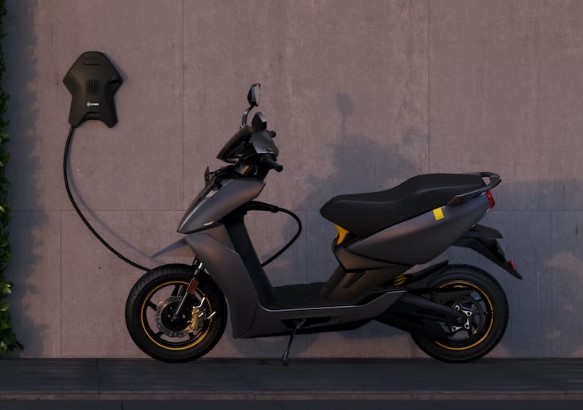
As the automobile industry embraces electric cars, a similar shift is happening with petrol-powered mopeds.
While mopeds have been around for a century and are widely used, electric versions are gradually replacing petrol models on the streets as more brands release them.
Electric mopeds still have a long way to go to outperform their petrol counterparts, but you can already see glimpses of what our electric-powered future will look like.
Self-balancing scooters
The 90s saw the first major advance in self-balancing technology.
Since then, a lot of brands have tried to implement this technology in their own unique way. Some of these attempts have been very successful, while others were not as much.
Hoverboards

If you’re delving into the e-scooter industry, you’ve likely come across hoverboards. Popular among teenagers in the late 2010s, they’re self-balancing personal e-vehicles.
However, they didn’t reach the prominence of e-scooters, primarily because they were marketed as fun toys rather than a primary mode of transportation.
In reality, these vehicles are impractical for daily use.
They’re challenging to learn and master, offer a lower range than e-scooters, and become uncomfortable on long rides.
I believe hoverboards will always stay the thing they are today – fun shiny toys.
You can check out my articles on electric scooters vs hoverboards to understand why I think that will be the case.
Electric unicycles

Unicycles evolved from circus acts to personal commuters with the advent of electric vehicles and advanced self-balancing technologies.
Like hoverboards, electric unicycles couldn’t become primary transportation like bikes and scooters.
They’re designed for fun and, while challenging to master, offer a smooth, compact, and enjoyable ride, appealing to the adventurous.
Two-wheeled personal transporters (PTs)

Two-wheeled personal transporters, or PTs, are arguably the most notorious product in the electric vehicles industry.
Primarily developed by Segway, the PT was a self-balancing scooter with a one-person cabin and a long upfront handlebar.
Controlled by pushing the plates beneath your legs forward or backward, it was notoriously difficult to ride.
The Segway PT’s challenges led to it becoming a staple in YouTube fail compilations, significantly damaging the reputation of two-wheeled self-balancing transporters.
The PT is currently discontinued, and it probably won’t be back on the market for the foreseeable future.
Still, I’ve decided to put the infamous vehicle on this list as a nice callback to where the e-vehicle industry once was, and how far it came since then.



